








TOOLS
































JANUARY 2025
EXECUTIVE


CONTRIBUTORS
Timothy
Dale B. Palileo
Eric M. Young
R.
Richard D. Varner

















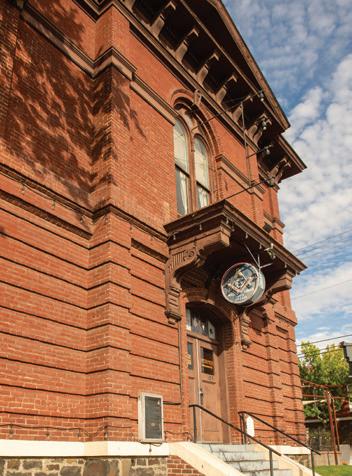


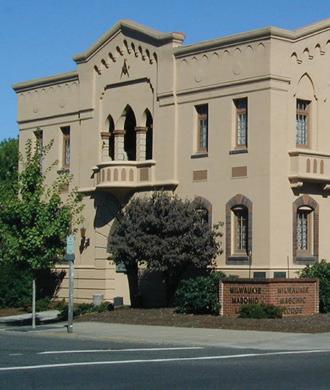



As we step into a new year, many Lodges are welcoming new Worshipful Masters and officers. Th is is a fitting time to reflect on the goodness and faithfulness of God, who continues to guide and bless us despite our shortcomings. With this fresh start, 2025 holds the potential to be a banner year—not only for your local Lodge but also for the Grand Lodge of A.F. & A.M. of Oregon and our fraternity as a whole.
While we have faced our share of struggles and setbacks, we have consistently emerged stronger and better for it.
In November, I had the privilege of attending and representing the Grand Lodge of Oregon at the World Conference of Regular Masonic Grand Lodges in Foz do Iguaçu, Paraná, Brazil. One particularly heartfelt moment was my conversation with the Grand Master of Israel, who shared fi rsthand accounts of how the ongoing war has impacted Masonry in his country. His stories reminded me of how fortunate we are in Oregon, yet how often we allow minor issues to occupy our time and energy unnecessarily.
As we begin this new chapter, I encourage you to ask your Worshipful Master how you can support him in his role. Attend Lodge regularly and strive to be an active participant, not just a bystander. Reach out to a Brother who hasn’t been to Lodge in a while—show genuine interest in him and invite him back into the fellowship of the Lodge.
Let’s make 2025 a truly meaningful year for your Lodge! Together, with dedication and effort, we can achieve this goal. Every Day!
Sincerely and Fraternally,

Timothy J. Best Grand Master 2024-2025

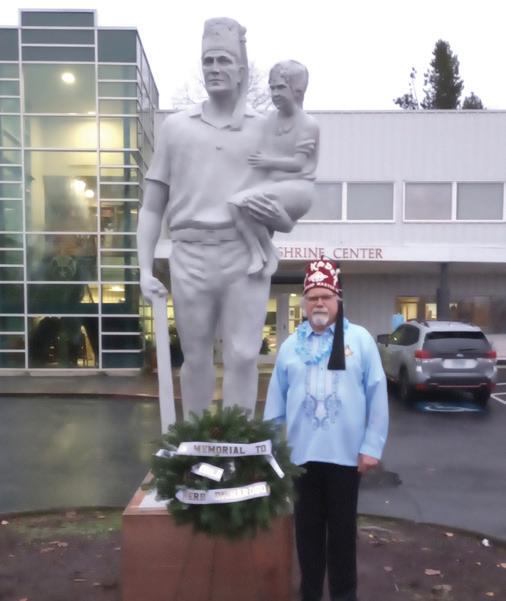




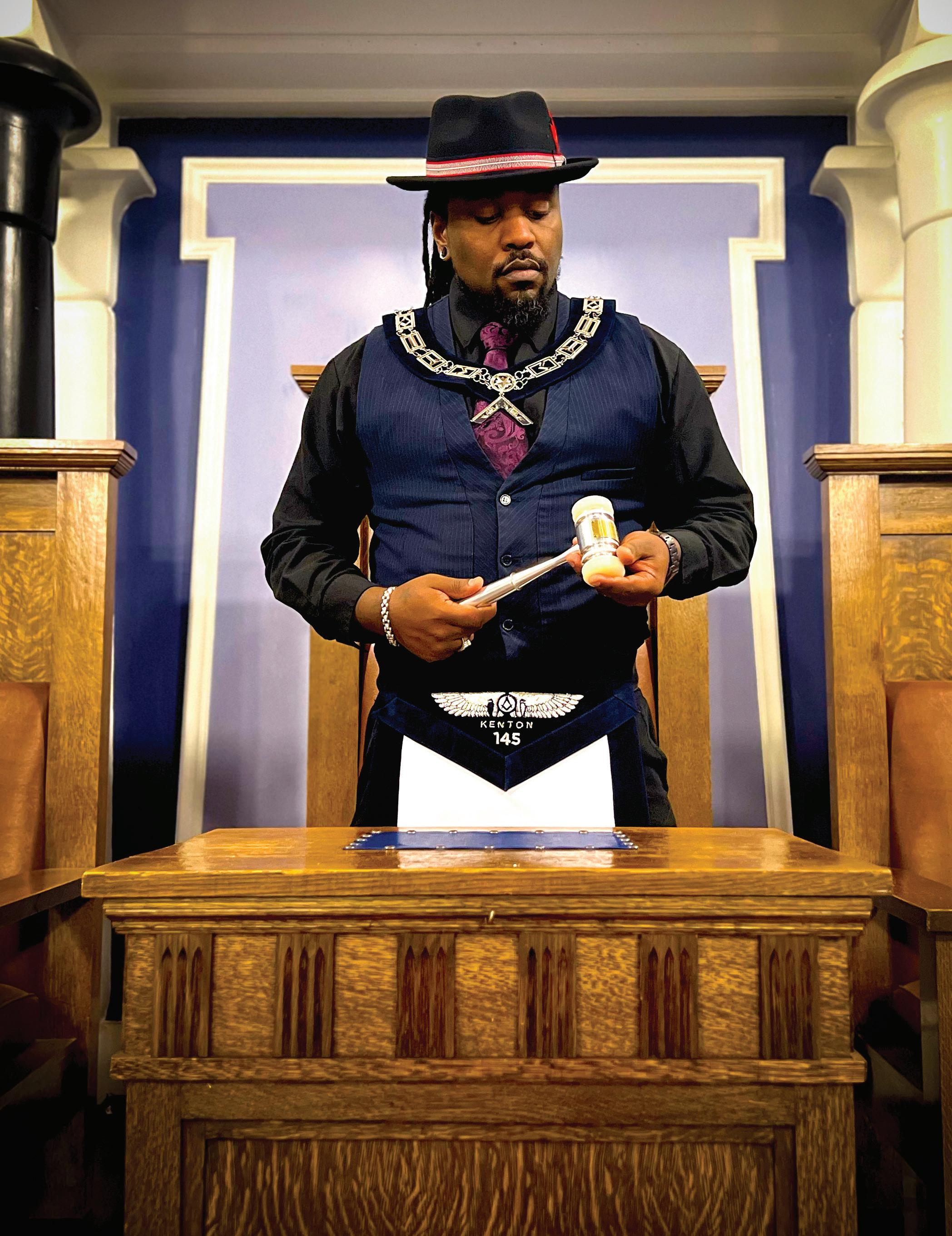




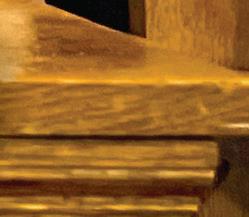

by W.B. Dale B. Palileo, Grand Lecturer

Congratulations on your Lodge’s newly elected officers! By now, your Lodge has installed its new set of officers for the new year and are now putting plans into motion.
Whether your Lodge has a new Master and Wardens or is relying on seasoned Past Masters for these roles, one thing is always going to be important: these officers need to have a good grasp of ritual.
Ritual is in almost everything we do in Lodge. It stands to reason that the Worshipful Master, Wardens, and by extension, the rest of the officer line, should show mastery in the ritual work to instill a sense of Lodge pride, elevate the Lodge’s harmonious atmosphere, and show the confidence that the Lodge is in good hands. Officers who have a good understanding of ritual can also serve as proper examples of how we as Masons and as gentlemen should behave inside the Lodge.
There are key aspects of ritual Masters and Wardens should focus on mastering, as well as valuable resources available to support their growth in their respective roles. Here’s a handy study guide and other ideas that can be used to promote good ritual, decorum, and ultimately a good Lodge experience:
The opening and closing ritual are the most essential pieces of ritual that Masters and Wardens should know by heart. Doing these well—with good projection, pacing and mindset—can easily set a good tone for any Lodge meeting. Practicing the opening and closing with the Deacons and the Chaplain can polish up any rough spots.
Sometimes, it is necessary to open the Lodge in “short form,” especially due to time constraints. Doing this ritual well and in the same standard as the regular version can show that the Lodge officers take the opening and closing of the Lodge seriously regardless of whether it is done in either short or regular form. You can find information on how to open and close your Lodge in short form in the Ritual book on pages 6-8.
There are times when a Lodge needs to bring the public or non-Masons inside the Lodge. Examples of such times would be for the presentation of a 50-year pin, a Hiram Award, or scholarship or donation check.
Such presentations would be more auspicious if family members or members of the public are invited into the Lodge to mark the occasion. Obviously, the Lodge will need to be called from labor to refreshment, not at ease.
Calling from labor to refreshment is also a key piece of ritual if you need to open your Lodge in a different degree than the one you initially open on. Examples of such circumstance would be when you need to examine a Master Mason and a Fellowcraft or Entered Apprentice on the same night, or if you would like to allow Entered Apprentices or Fellowcrafts in your stated meeting during the official visit of the Grand Master or your District Deputy.
Experienced Worshipful Masters will find this piece of ritual to be very straightforward, but again, a short practice prior to the evening’s agenda can streamline the evening’s ritual procedures and can potentially avoid any minor embarrassments. How to properly do this piece of ritual is available on pages 8-9 of the Ritual book.
There are other smaller ritual procedures that the Worshipful Master and Wardens need to know. These are: ANCG ALM, putting the Lodge at ease, and PRGNG L WN SW I NT STSFD, in the Ritual book on pages 9-10.
Familiarity with balloting procedures would also be helpful. This piece of ritual is on pages 10-13 of the Ritual book.
Throughout the year, your District Deputy will be making at least two official visits to your Lodge. The Grand Master may have also scheduled a visit to your Lodge sometime during his year in the Grand East. Such visits are auspicious occasions and should be marked with celebrations and positive energy. It would be a good idea to practice how to receive these distinguished guests in a manner that is appropriate of their respective offices. You’ll find instructions on how to properly do this in the Standard Manual, pages 16-19, or in the Masonic Etiquette and Instructions booklet, pages 16-18.
Consider Hosting a Basic School of Instruction
Sometimes, a new Worshipful Master and his officers need a little more help than just a short practice.
Hosting a Basic School of Instruction would be a great idea to consider, especially if there is a need to clarify certain portions of the opening and closing ritual of any degree, or if any of the officers need assistance in how to correctly perform certain parts.
Masters and Wardens should review the Masonic Etiquette and Instructions booklet, which provides guidance on proper decorum inside and outside the Lodge. The Officers’ Handbook is another valuable resource, detailing the duties and responsibilities of each Lodge officer. Both are available in PDF format in Grand View or as hard copies from the Lodge secretary.
Consider Learning How to Confer a Degree
A new Worshipful Master, Senior Warden, and Junior Warden should consider knowing how to confer a Masonic degree for several compelling reasons. First and foremost, these officers hold principal leadership positions within the Lodge. Being able to confidently confer a degree showcases their command of Masonic traditions and reinforces their capacity to lead with assurance. This skill remains valuable even after they transition to the role of Past Master.
Additionally, learning how to confer a degree is not only beneficial for the Lodge but is personally enriching for the officers, deepening their own Masonic journey and strengthening their appreciation for the symbolism and lessons found within the degrees.
Even if your Lodge does not have any qualified candidates for upcoming degrees, learning how to confer degrees can assist neighboring Lodges with their degree conferrals. This collaboration fosters camaraderie and strengthens relationships with other Lodges while providing officers with valuable experience in participating in degrees. Such practice hones their skills and prepares them for when your own Lodge is ready to perform degree work.
In summation, having a strong command of the essential ritual elements of running a Lodge not only sets the stage for a successful year for the Worshipful Master but also equips the Senior and Junior Wardens with the confidence and proficiency needed for their own future terms in the Oriental Chair. This commitment to ritual excellence fosters continuity, enriches the Lodge’s Masonic experience, and strengthens the bonds within the Lodge and the broader Masonic community.

To communicate which Ritual parts you could participate in for Degree Work, use the Ritual Tool in Grand View!
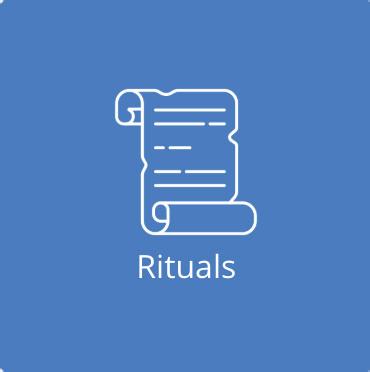

From there you can indicate how far you’re willing to travel and which parts you can perform. That way, when a nearby Lodge is looking for support, your name can pop up in their search to fill the various Ritual roles.

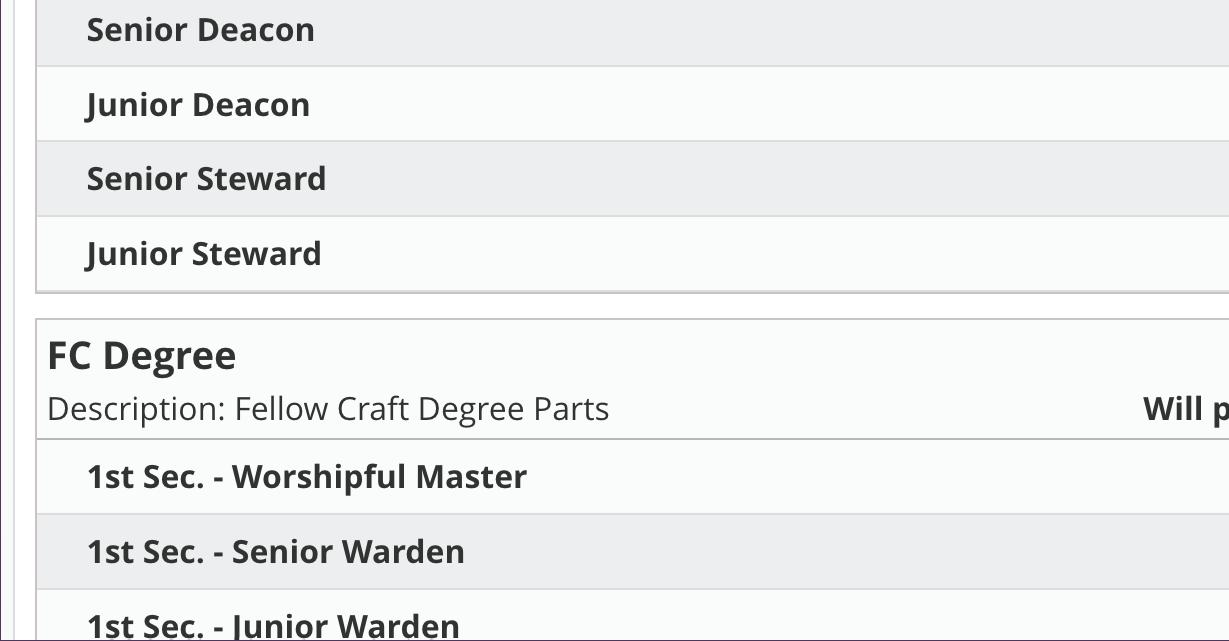






by W.B. Eric M. Young, Senior Grand Deacon
In my December article, “Creating a Legacy,” I focused on strategies for giving during your lifetime. In this followup, I’ll discuss charitable giving strategies that take effect after you’re gone.
Oregon has one of the lowest estate tax exemptions in the country, with taxes owed on estates over $1 million. Estate tax rates in Oregon range from 10% to 16%, depending on the estate’s value. In Washington State, the exemption is $2.193 million for deaths occurring in 2024. Federally, the estate tax exemption will be $13.99 million in 2025. Given these thresholds, you may wonder: How can I reduce the size of my estate, benefit the charities of my choice, and avoid estate taxes?
Charitable giving through structured strategies not only reduces the taxable size of your estate but also offers longterm benefits, flexibility, and greater control over how your contributions are used. By establishing a plan, you can create a lasting legacy for your family and the causes you care about.
HERE ARE FOUR POPULAR OPTIONS TO CONSIDER:
� FAMILY FOUNDATIONS
A private foundation is a nonprofit corporation or trust with tax-exempt status. Foundations allow families to retain control over grant-making decisions and the management of donated assets. Th is option provides oversight of how, when, and where funds are distributed, enabling families to align charitable giving with their shared values.
A donor-advised fund is a charitable vehicle managed by a public charity. While contributions to a DAF are irrevocable, you retain the ability to recommend grants to your chosen charities. DAFs offer flexibility, allowing you to choose investment options aligned with your philanthropic goals and create a legacy that can last in perpetuity.
A charitable remainder trust is an irrevocable trust where you contribute assets, receive income from those assets for a set term (such as your lifetime), and then designate the remaining balance to a charity. Th is strategy allows you to generate income, potentially receive tax benefits, and make a significant charitable impact.
A charitable lead trust provides fi nancial support to charities for a specified period. Once that period ends, the remaining assets are transferred to your family or other beneficiaries. Th is option works as the inverse of a charitable remainder trust, offering another way to balance philanthropic and family priorities.
These charitable strategies can help reduce taxes while supporting your charitable goals. However, each option comes with unique features and technical requirements. To maximize potential tax savings and ensure your plan aligns with your goals, consult your legal and tax advisors before proceeding.
By implementing the right charitable giving strategy, you can leave a lasting legacy, benefit the causes you care about, and provide for your family in meaningful ways.
by M.W.B. R. Michael Wick, Past Grand Master
As January opens a new year, it is appropriate that we pause to reflect on the obligations we take as Freemasons – both those which are expressly vowed at the altar and those which are implied – and to reaffirm those solemn promises. The challenge of being an upright man and Mason today is both the same and, I would argue, different than it was ten short years ago when I was in the Grand East.
The obligations we take as Freemasons are solemn and binding promises by which we are to live our lives. The bar is high – as it should be. Taken upon our own free will, and witnessed by our Masonic Brethren, they impart the expectations of a higher level of behavior to be exhibited both inside and outside of the Lodge. Freemasonry forces no man to obligate himself at the altar, but once taken, the expectations are real.
During the Degree rituals, the obligations imparted are expressed and evident; also taken are a host of implied
obligations. These implied obligations are what the outer world most oft en sees as we go about our daily lives. We meet on the level, treating those with whom we interact with respect and an attitude of equality. We also must act by the plumb, which symbolizes justness and uprightness of life and actions; it is a symbol of decency, honesty, and integrity which distinguishes a good and just man and Mason. Lastly, we part on the square, putting our trust in one another as we strive to grow from rough ashlar to perfect ashlar, knowing it is a life-long journey we will never truly complete.
What is distressing to see today versus ten years ago, is the uptick in incivility that has raised its ugly head. Whether it’s TV, radio, online, or in-person, civil discourse has almost become passé. While I would like to claim otherwise, it
would be naïve to say Freemasonry has been immune from its spread. What can we do? As Grand Master Best has said, “Be A Mason—Every Day.” Reaffi rm and live our Masonic Obligations as we go about our daily lives. An outstanding read on the subject is e Civility Mosaic, by Past Grand Master of California, Russ Charvonia; it would be a great addition to anyone’s library.
We are all rough ashlars in some way or another – my wife would be inclined to substitute ‘cave man’ for ‘rough ashlar’ in my case but that’s a subject for another day. The point is, as Masons we all must make a constant effort to practice civility and decorum at all times, both in and out of Lodge. Living our Masonic Obligations – Every Day!
... as Masons we all must make a constant effort to practice civility and decorum at all times... “ “



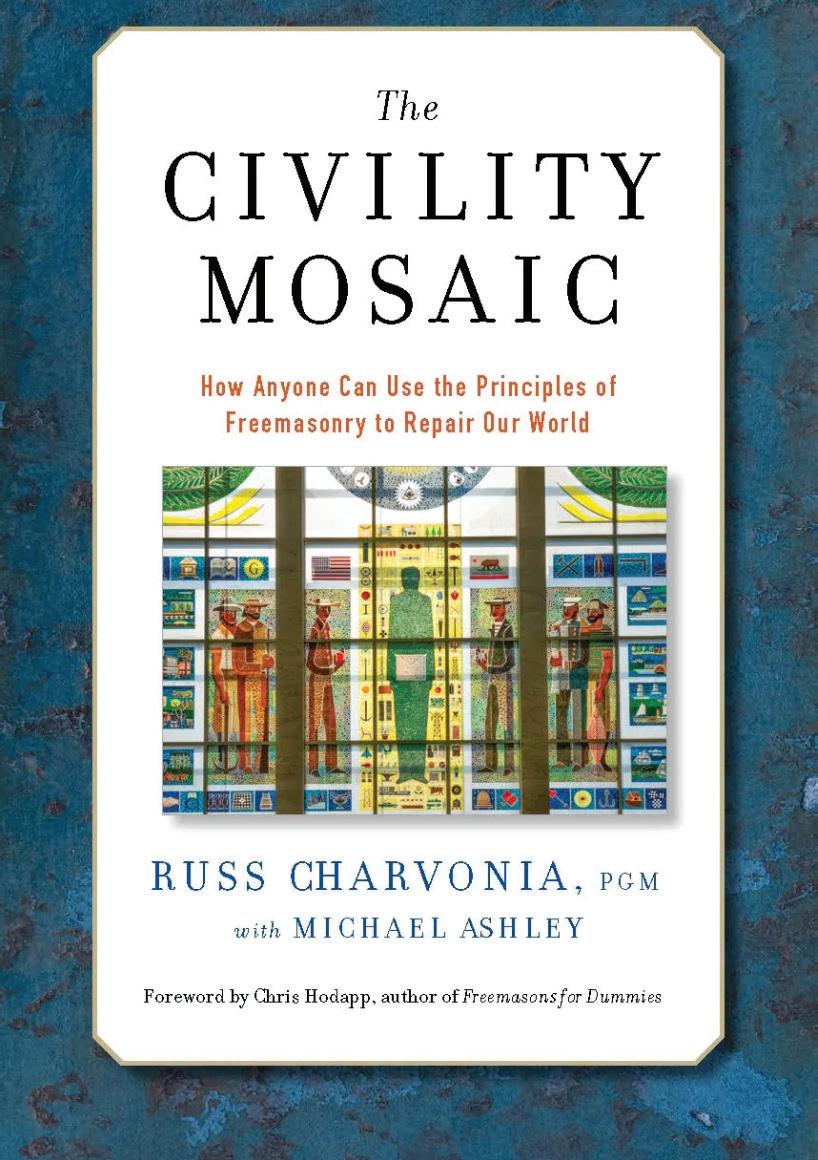

M.W.B. Russ Charvonia’s The Civility Mosaic, written with W.B. Michael Ashley, is a 21st Century treatise on restoring civility as a matter of our survival. As Past Grand Master of Masons in California, Charvonia provides readers with a firstof-its-kind, insider look at Freemasonry and how the practical application of its underlying ethos of Brotherly Love, Relief, and Truth can help us rise above the world’s bickering and violence to create a more compassionate, more humane, and more civil society.
Visit CivilityMosaic.com for more information and to purchase this book.

In the quest for a thriving fraternity, the distinction between “Making Members” and “Making Masons” emerges as a pivotal point of reflection.
Our Lodges teem with Brethren diverse in interests and commitments yet united in the quest for spiritual and mental enrichment through Masonry.
Th is shared journey, however, faces the risk of becoming mundane, transforming zeal into lethargy.
The core of our Fraternity thrives not on mere numbers, but on the quality of the Masonic experience we offer.
A Lodge that functions solely as an administrative body, absorbed in procedural formalities, inadvertently alienates its members, squandering their precious time and, more importantly, their quest for enlightenment.
Regrettably, this scenario leads to disengagement, which is mirrored in the dwindling attendance and eventual absence of once-eager members.
Our efforts must ensure that every Brother feels valued, understood, and integral to the Fraternity.
When a Mason fi nds in his Lodge a sanctuary for fellowship, enlightenment, and personal growth, his commitment is renewed, and his participation invigorated.
Th is is the essence of “Making Masons”.
Fostering a deeply-rooted bond with the Craft , one that transcends the transactional aspects of membership.
Let us, therefore, pivot towards revitalizing our Lodges, making them beacons of Masonic wisdom and Brotherhood.
In doing so, we preserve the legacy of our ancient Fraternity and enhance its relevance and vibrancy for generations to come.
Let’s reaffi rm our commitment to this noble endeavor, ensuring that every Brother can unequivocally affi rm the value of his Masonic journey.


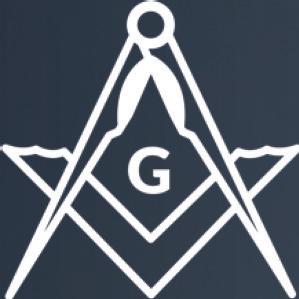





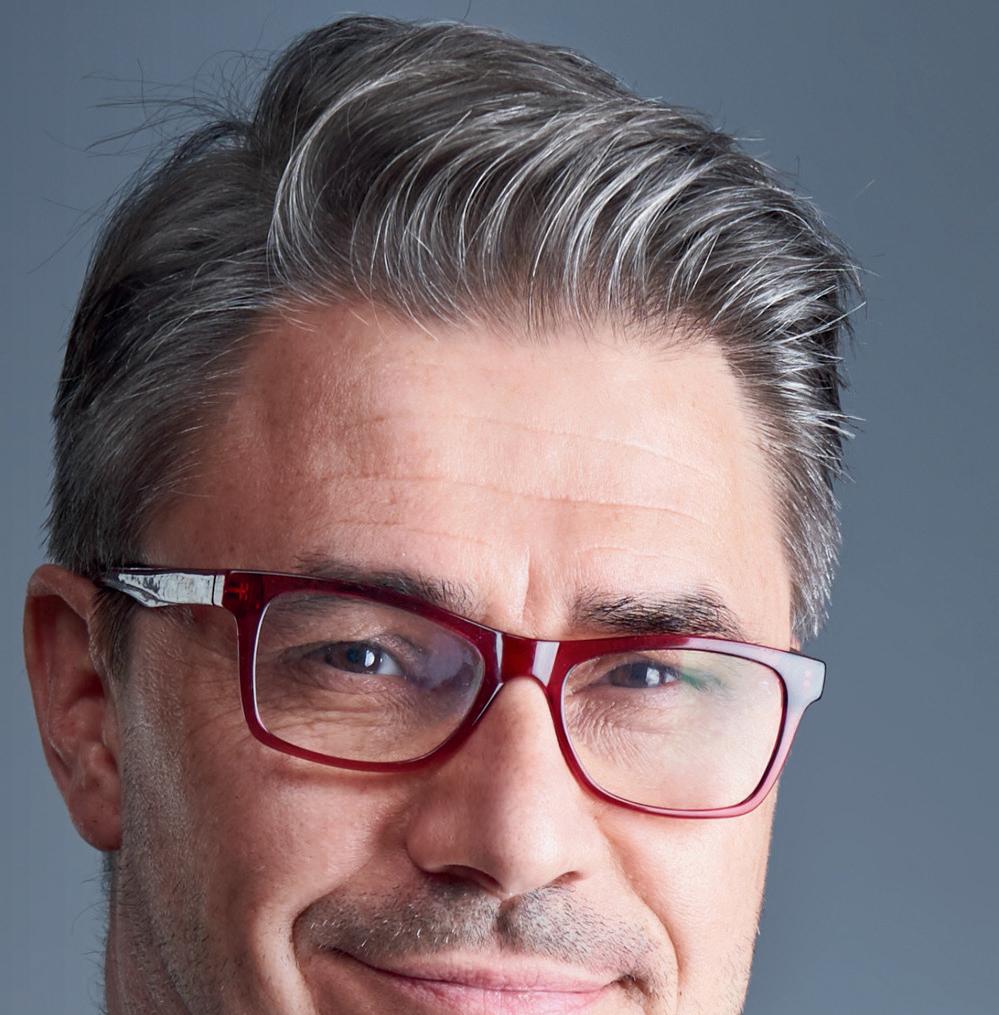


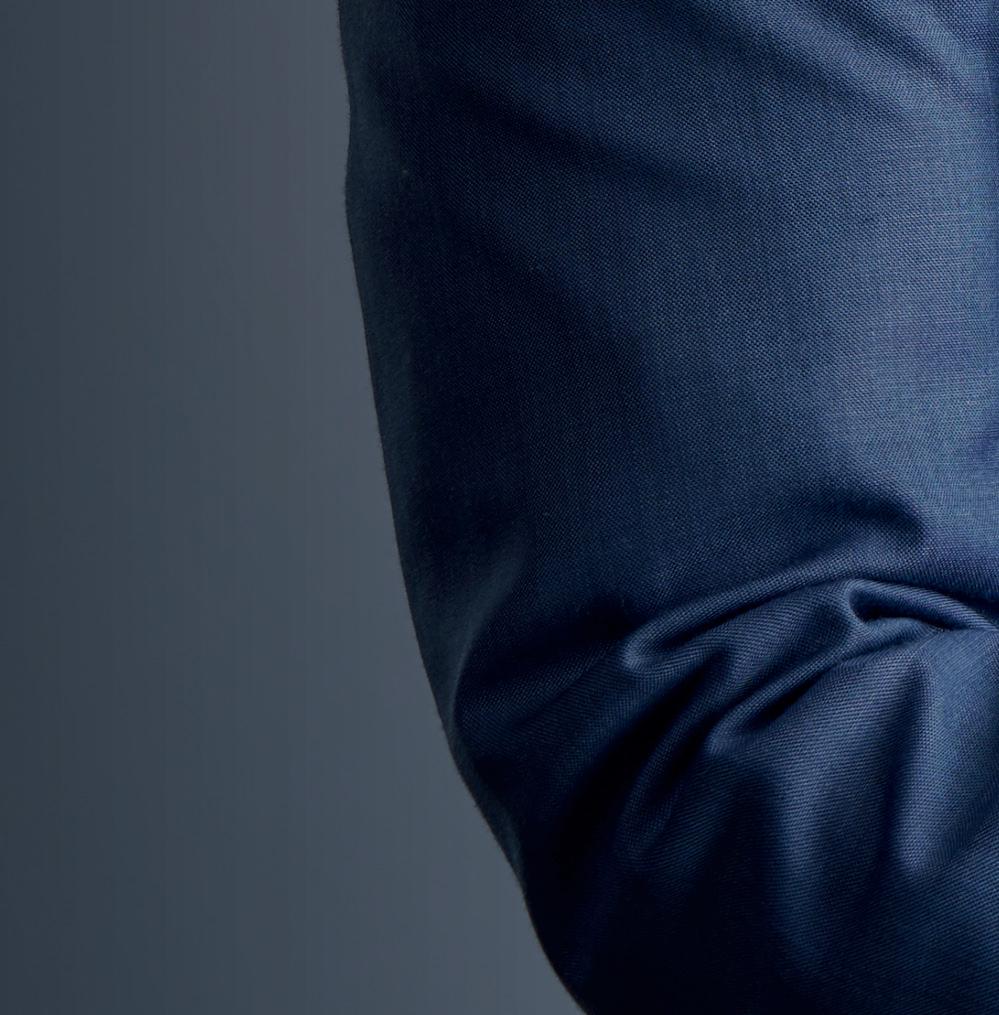



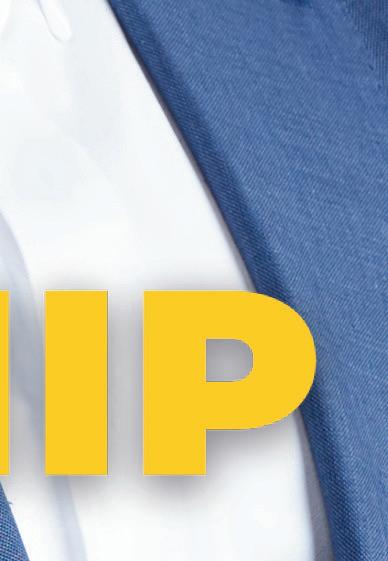








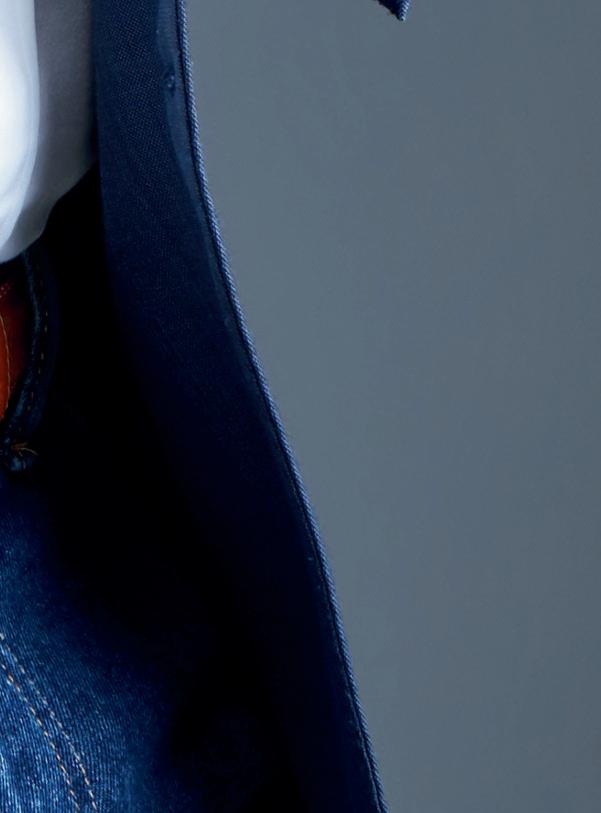






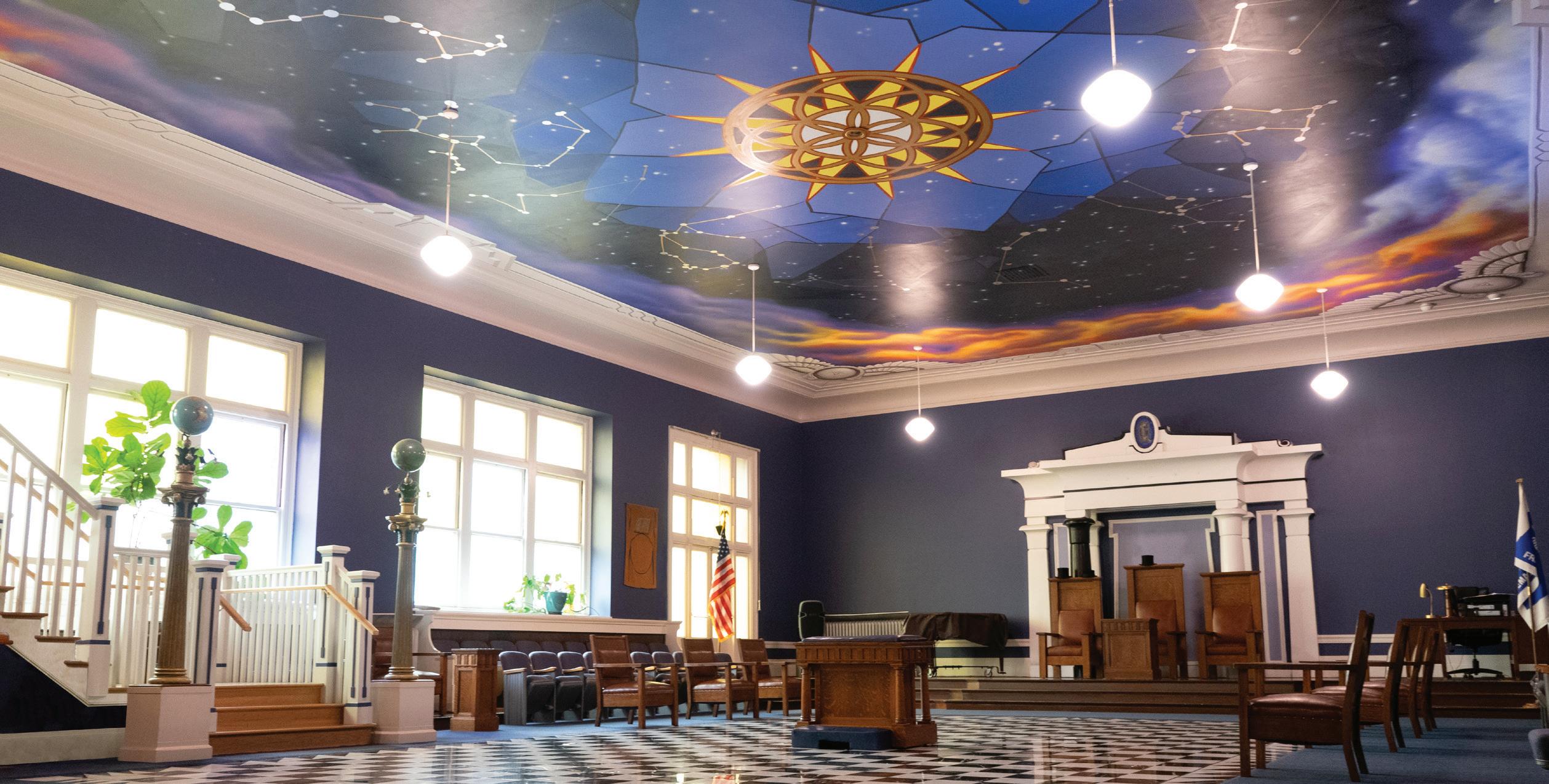
by R.W.B. Richard D. Varner, Senior Grand Warden
Brothers, does your Lodge own a building or is part of a temple association? If so, there is a new resource on Grand View that your Lodge should consider using. Please look at the new Building Management Handbook.
Your building is often the most visible symbol of Freemasonry in your community. If it is properly maintained, it will be one of the most important fi nancial assets of the Lodge. In some cases, the Lodge building is a either a symbol of, or contributes to, the culture of a Lodge. Finally, in many cases, it is not only the home to the Lodge, but also houses other Masonic organizations which may not survive without the building.
There are several recommendations included in the manual including the following:
• Having a map of the major utility connections and shut-off s. When something goes wrong, this can be the difference between a minor inconvenience and a major disaster.
• Doing an evaluation of major building systems. What condition are they in, what are their remaining useful lives, how much will it cost to repair, maintain or replace, and what will be the source of funding?
• Does your Lodge have separate fi nancial accounts to deal with building issues? Is money saved on a systematic basis to fund operation and maintenance costs?
• Who is responsible for managing the building? Th is is not just oversight of the day-to-day use of the building but who is responsible for managing contracts and agreements and who does long-term capital and funding planning.
• Does your Lodge have written agreements with all building users? What if there is a disagreement? The manual includes a recommended format for such agreements.
As Lodges prepare for a new year, I urge you to examine this new Handbook and see what items included in it that your Lodge can use to improve its operations.


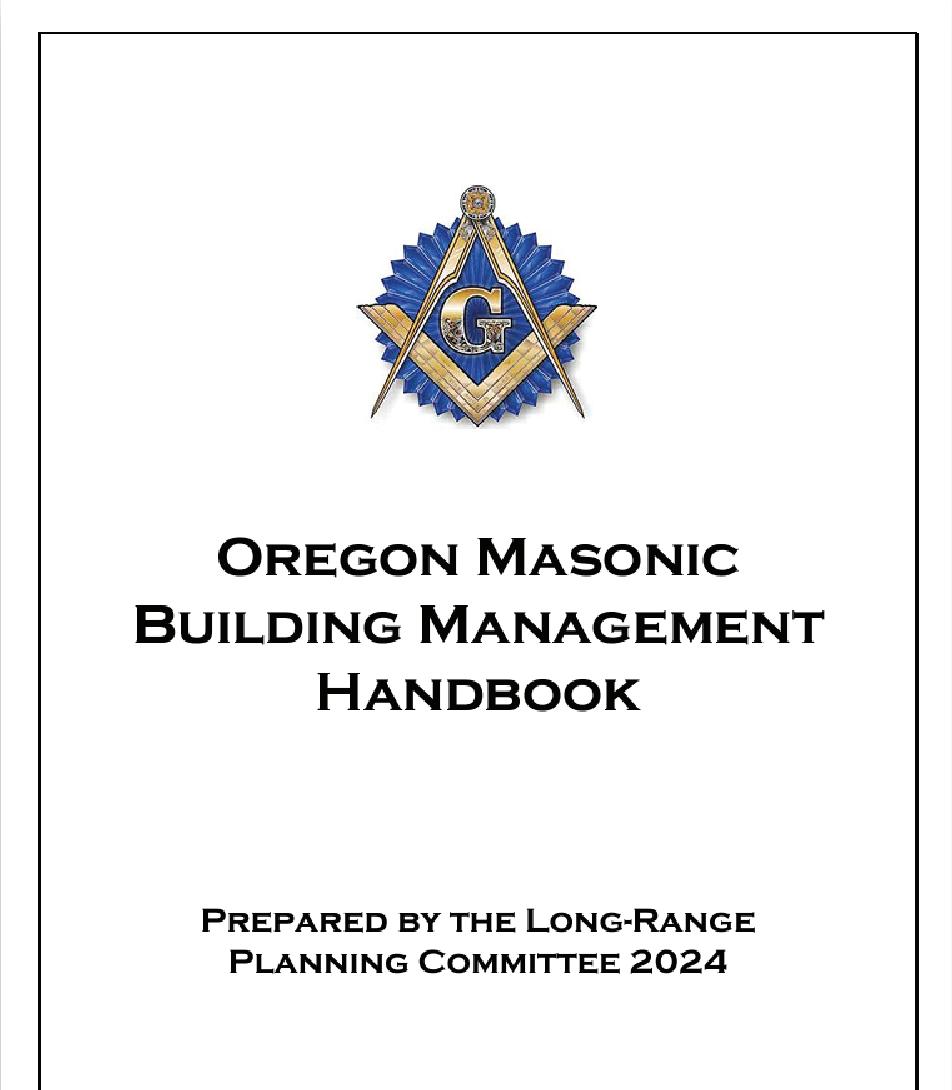




Proposed Legislation is due to the Grand Secretary’s office.

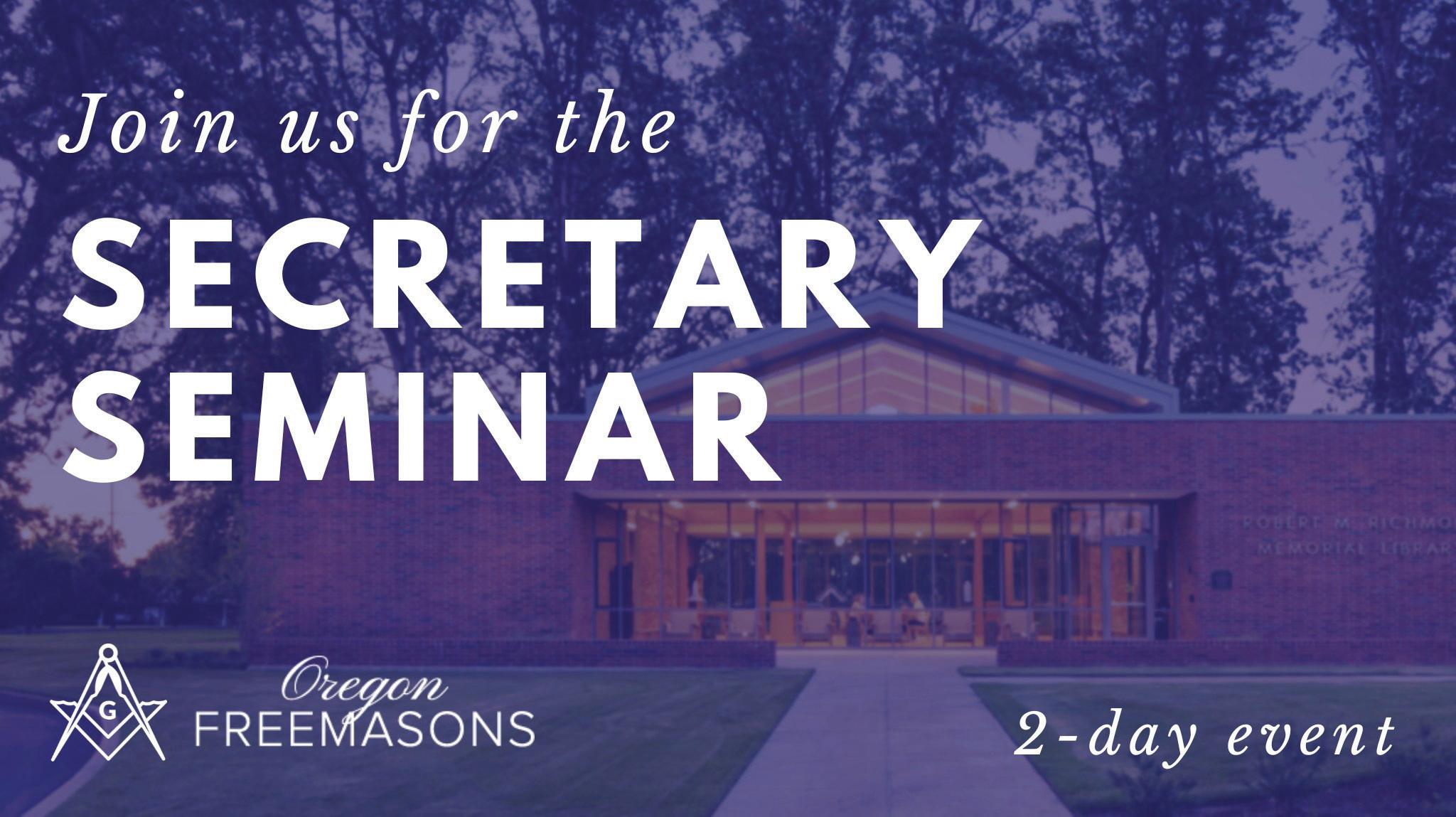
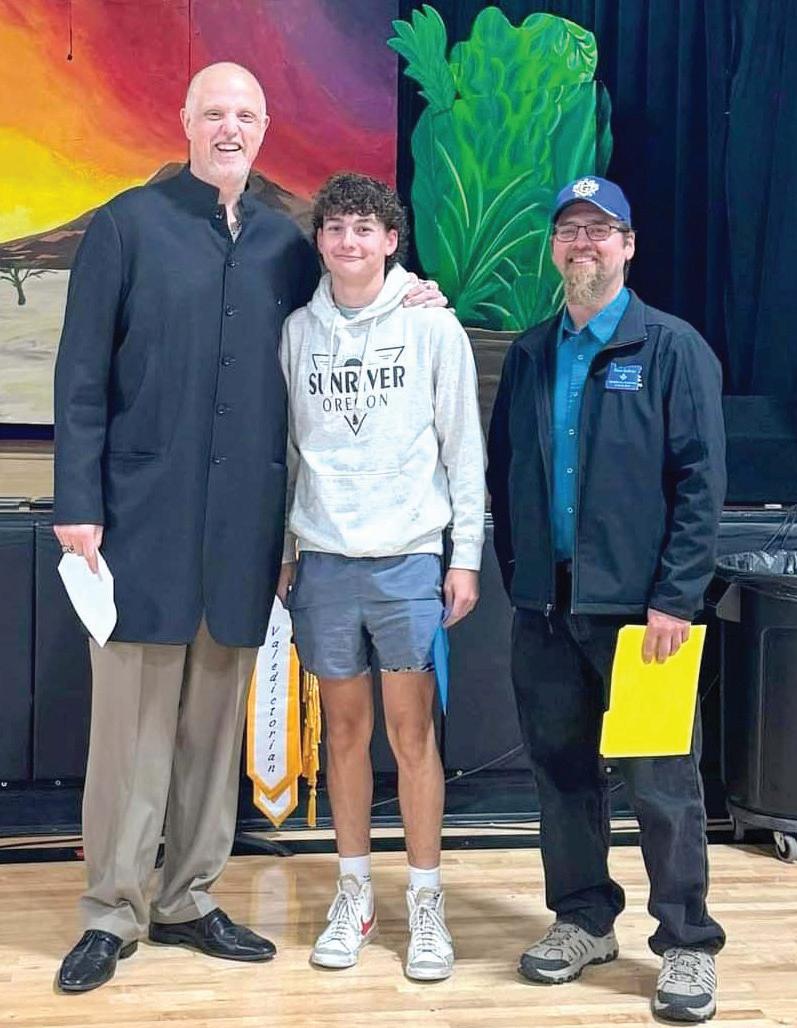
Rickreall Masonic Lodge proudly presented its 2nd Annual Vocational Scholarship to Brody Cruikshank, a graduating senior from Perrydale School District.

1-5 P.M. ON JANUARYFRIDAY, 24 & 9 A.M. - 3 P.M. ONJANUARYSATURDAY, 25
Vocational education is vital for equipping individuals with skills for essential industries, strengthening both our community and economy. Th is year, Brody received a $1,000 scholarship to AirGas to support his future in the welding industry.
We commend his dedication and are confident in his success. Congratulations, Brody, and best wishes for a bright future in your chosen field.
W.B. Anthony D. Blosser and W.B. Brian S. Jenkins presented the scholarschip.


Milwaukie-Waluga Lodge No. 109 recently demonstrated its commitment to community service with two impactful volunteer events.
On November 9, 2024, members and their families spent a few hours at the Oregon Food Bank, packing mushrooms and apples. Their combined efforts contributed nearly 6,000 meals to families in need, showcasing the Lodge’s dedication to fighting hunger.
Later, on November 30, members volunteered with the Salvation Army to sort toys for children in need. After toys were collected, they were organized by age and gender to match shopping lists for families. In just two hours, the team sorted an entire warehouse full of toys, ensuring a brighter holiday season for countless children.
These events reflect the Lodge’s spirit of service and fellowship, exemplifying the positive impact Freemasons make in their communities.

W.B. Dick Tooley, presented a check to Stephen Beale, Operations Coordinator for the Florence Food Share. Th is past Thanksgiving they served 15% more families than in 2023.
W.B. Hunt Ramsey, Bro. Jared Baggin, and Steven Baggin were also present. We need to continue to support these different organizations, they help the communities much more than we may realize.


At Umatilla Lodge No. 40, two Worshipful Brothers orchestrated a remarkable surprise: the installation of historically accurate wallpaper in the Lodge’s 1868 building. W.B. Nicholas Nieffenegger and W.B. Phil Walchil discovered a fragment of the original wallpaper while working on insulation three years ago. Inspired, they secretly arranged for its meticulous restoration, including cleaning and reproduction by specialists in Portland and Pakistan.
On November 12, 2024, the Brethren entered the Lodge to fi nd stunning, professionally installed wallpaper, a faithful recreation of the original design. The dedication and love these Brothers showed for their Lodge will leave a lasting legacy.
If you’re ever in the area, visit Umatilla No. 40 on the second Tuesday at 7 p.m. to experience its rich history and the beauty of their efforts fi rsthand.
e Grand Lodge of A.F. & A.M. of Oregon
2150 Masonic Way
Forest Grove, OR 97116
Change service requested

Scan









